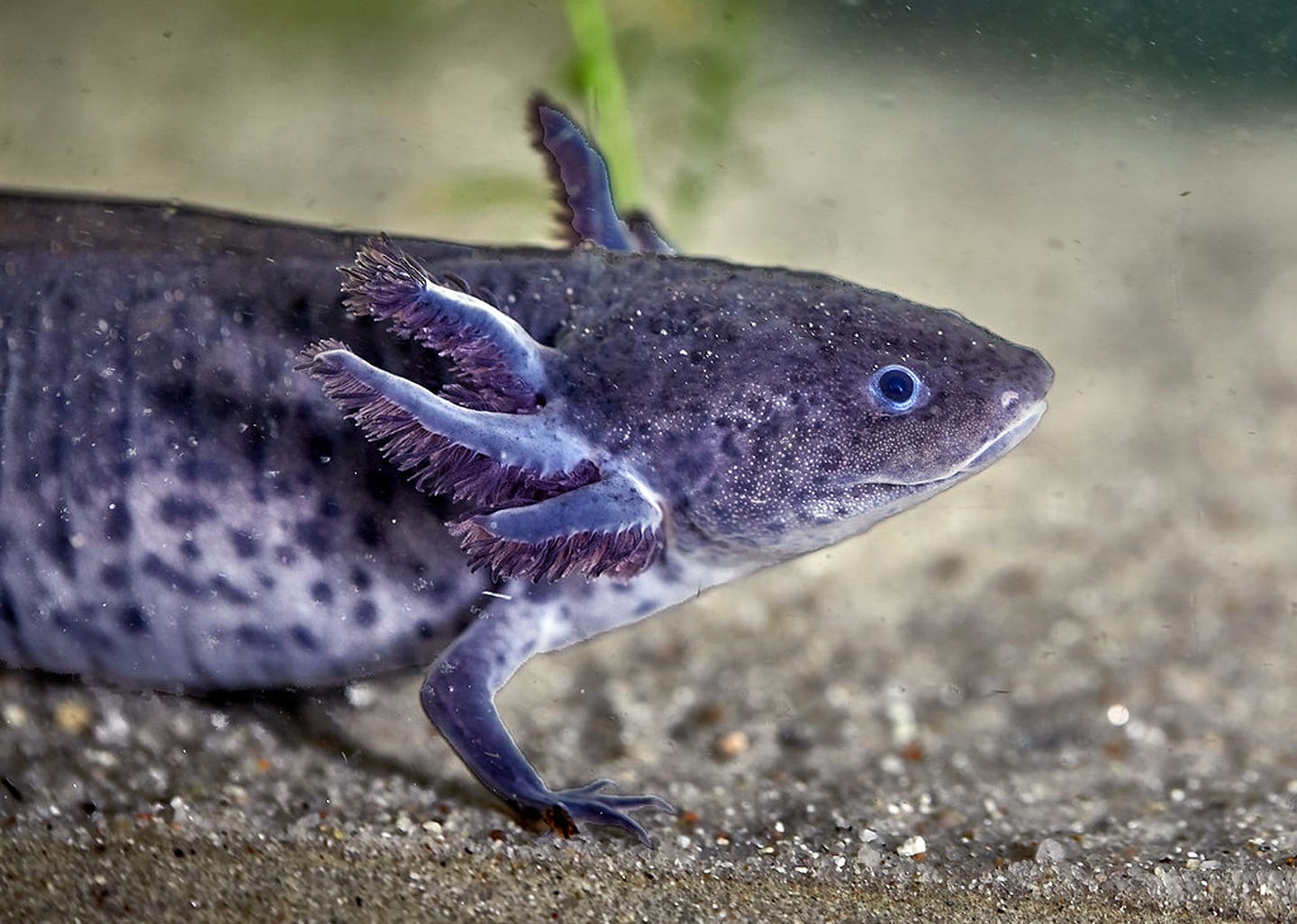The axolotl, a creature seemingly crafted from whimsy with its feathery gills and perpetual grin, is facing a stark reality: extinction. While it may resemble a fantastical illustration from a children’s book, the axolotl’s plight is a stark reminder of the very real threat to biodiversity, even in bustling urban centers like Mexico City. Once abundant in the intricate network of canals crisscrossing the city, fewer than 100 adult axolotls are estimated to remain in the wild, clinging to survival in their only natural habitat – Lake Xochimilco. Their decline is not due to a single enemy, but rather a perfect storm of human-induced pressures pushing them towards the brink.
A Shrinking Oasis: Habitat Loss in the Concrete Jungle
Imagine your home slowly being replaced by concrete, your food sources dwindling, and unfamiliar, aggressive guests moving in. This is the situation for the axolotl as urbanization continues to encroach upon Lake Xochimilco.
From 1998 to 2014, a mere 16 years, the axolotl population in Lake Xochimilco plummeted from 2,340 to a mere 14 individuals per square mile—a stark illustration of the speed and severity of their decline. The once sprawling wetlands that provided refuge and breeding grounds are being carved into smaller, isolated pockets by urban development. This fragmentation isolates populations, making them more vulnerable to localized threats and hindering genetic exchange.
Adding to the habitat loss, untreated wastewater and agricultural runoff flow into the lake, polluting their watery home. This pollution not only directly harms the axolotls but also disrupts the delicate balance of the entire ecosystem, impacting their food sources and overall health.
Unwanted Neighbors: The Threat of Invasive Species
As if habitat loss and pollution weren’t enough, the axolotl also faces intense competition from invasive species. Fish like tilapia and carp, introduced to Lake Xochimilco for aquaculture, have become voracious competitors for resources. These opportunistic invaders consume the same food sources as the axolotl, putting additional pressure on an already limited food supply. To make matters worse, tilapia and carp have also been observed preying on axolotl eggs and young, further hindering their chances of recovery.
A Changing Climate, An Uncertain Future
The looming shadow of climate change adds another layer of complexity to the axolotl’s struggle for survival. While more research is needed to fully comprehend the specific effects of climate change on axolotls, it’s likely that rising temperatures and altered precipitation patterns will negatively impact their habitat. Droughts could lead to lower water levels in Lake Xochimilco, concentrating pollutants and reducing suitable breeding areas. Conversely, heavy rainfall could cause increased runoff, flushing more pollutants into the lake and disrupting the delicate balance of the ecosystem.
The Lure of the Axolotl: A Pet With a Problem
Paradoxically, the very traits that make the axolotl so captivating—its unique appearance and incredible regenerative abilities—have also contributed to its decline. The axolotl has become a sought-after pet in the exotic animal trade, leading to concerns about over-collection from the wild. While international trade is regulated under the Convention on International Trade in Endangered Species of Wild Fauna and Flora (CITES), monitoring and enforcing these regulations can be challenging, and illegal trade likely persists.
A Glimmer of Hope: Conservation Efforts Offer a Lifeline
Despite the multitude of threats, there’s still hope for the axolotl. Dedicated scientists, conservationists, and local communities are working tirelessly to protect this remarkable species.
- Captive Breeding Programs: Several institutions are involved in carefully managed captive breeding programs, working to maintain genetic diversity and ensure a healthy population for potential reintroduction into the wild. These programs serve as a safety net against extinction, providing a source of axolotls should conditions in Lake Xochimilco improve.
- Habitat Restoration: Efforts are underway to restore and protect remaining axolotl habitat within Lake Xochimilco. This includes projects focused on cleaning polluted canals, creating “axolotl refuges” within the lake, and working with local communities to implement sustainable farming practices that reduce runoff.
- Invasive Species Control: Researchers are exploring strategies to control the populations of invasive fish species in Lake Xochimilco. Techniques could include introducing native predators, modifying the habitat to make it less suitable for invasive species, and developing targeted removal methods.
The Fate of the Axolotl: A Shared Responsibility
Saving the axolotl is not just about protecting a single species; it’s about conserving a vital part of Mexico’s natural heritage and ensuring a healthy future for one of the world’s most biodiverse regions. The fight for the axolotl reminds us that even in the face of rapid urbanization and global challenges like climate change, hope remains. By supporting conservation efforts, raising awareness, and making conscious choices to reduce our environmental impact, we can all play a role in ensuring that the axolotl’s story doesn’t end in tragedy, but rather evolves into a tale of resilience and successful coexistence.
From why is it illegal to pet a manatee to what does it mean when a cat kneads, all the interesting facts are here to fill in missing knowledge gaps.
- Unlock Elemental 2 Secrets: Actionable Insights Now - April 2, 2025
- Lot’s Wife’s Name: Unveiling the Mystery of Sodom’s Fall - April 2, 2025
- Photocell Sensors: A Complete Guide for Selection and Implementation - April 2, 2025
















